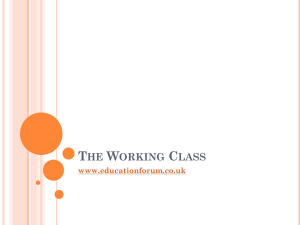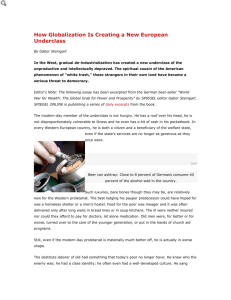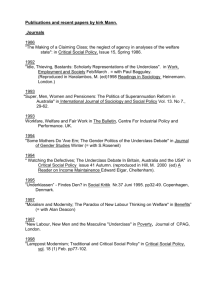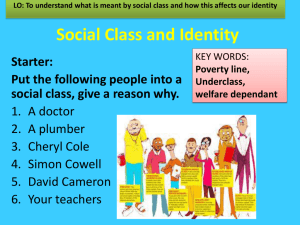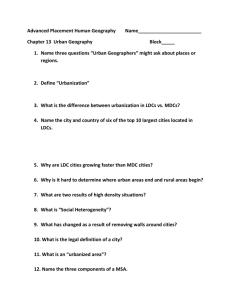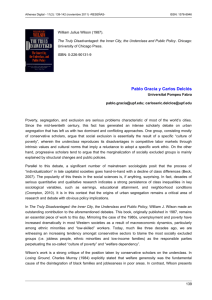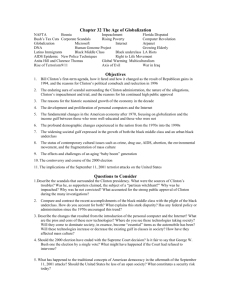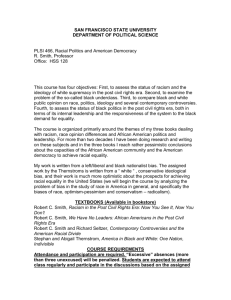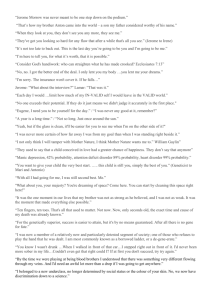THE UNDERCLASS
advertisement
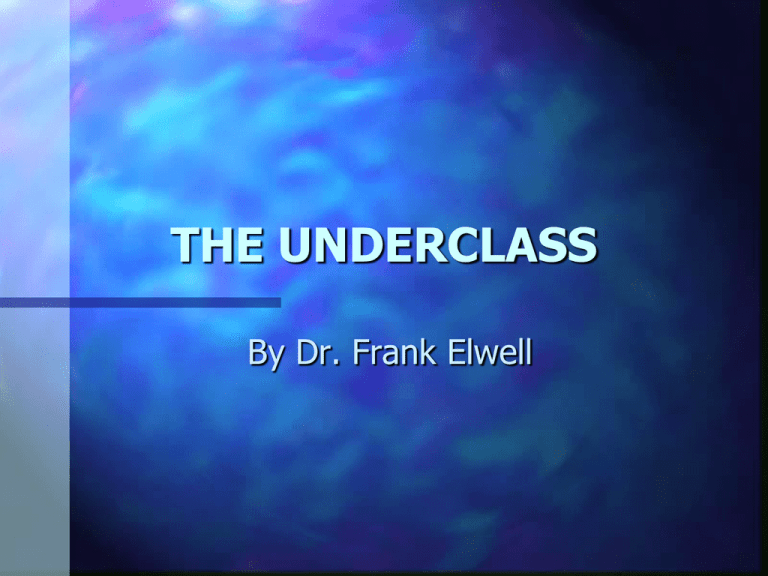
THE UNDERCLASS By Dr. Frank Elwell The Underclass America has developed a unique and seemingly permanent underclass consisting of millions of people living in urban ghettos. The Underclass This underclass has a much higher proportion of minorities (particularly Black and Hispanic) than the rest of the population. The Underclass This underclass has much higher rates of poverty, unemployment, disease, crime, family breakdown, mental illness, drug abuse and many other forms of deviance. The Underclass They pay a higher proportion of their income for taxes but tend to be under served by government institutions. The Underclass Since the 1970s, while the number of large-central-city whites living in poverty declined by 5%, the number of large-central-city blacks living in poverty increased by 21%. The Underclass On average the unemployment rates for black Americans (who are disproportionately represented in the underclass) runs about twice that of whites. The Underclass Even in good times when unemployment is running about 5 percent, adding the hidden unemployed to the official rates raises the African American unemployment rate to 25% (compared to 12% for whites calculated on the same basis). On the West Side of Chicago: In the mid-1990s on the West side of Chicago (a neighborhood of the underclass: – Joblessness was over 50% – The 15-square mile area contained not a single movie theater – Check-cashing joints had supplanted banks. On the West Side of Chicago: In some neighborhoods as much as 60% of the housing is abandoned. Much of the abandoned housing is used by pushers. Average dropout rate in west side schools runs as high as 59%. The Underclass Many of the underclass choose violent crime as a solution to the chronic despair and envy that they must otherwise endure. The Underclass Unemployed inner city members of the underclass know from bitter experience that their life is a dead end. The Underclass The next question to be answered is why the underclass remain chronically unemployed? The Underclass During and after World War II Blacks migrated in unprecedented numbers from farms and cities in search of union-wage factory jobs. The Underclass This was scarcely a voluntary movement since it coincided with the end of the era of small farms and with the final stages of the industrialization of agriculture in the U.S. The Underclass It was precisely during this same period that the great shift from goods production to service and information production was taking place in America. Manufacturing Jobs: CHICAGO LOST 60% SINCE 1968 PHILADELPHIA LOST 64% NEW YORK LOST 64% DETROIT HAS LOST 51% The Underclass The result is a massive pile up of unemployed black workers inside the run-down core of the nation’s largest cities. The Underclass Why wasn’t this great army of unskilled workers called upon to take part in the explosive expansion of the new bureaucratic and service economy? The Underclass The growth of bureaucracy and service jobs coincides with the mass conversion of the reserve army of white housewives from baby production and services in the home to the production of services and information in the work place.... The Underclass The fact that white women were preferred over black men in the only sector of the job market that has been expanding during the last forty years accounts for the uniquely grim prospects of the underclass in the U.S. Women Enjoyed Advantages: More education Middle class values Fewer problems working as subordinates to white bosses Women Enjoyed Advantages: While white male employers may be prejudiced against hiring women, they are far more prejudiced against hiring Black men. The Underclass The links between socioeconomic inequalities and the level of violence in society has been demonstrated in numerous studies. The Underclass Despite recent declines, America still has far higher rates of violent crime (murder, rape, muggings, assault), than any other industrial society. The Underclass While America also has a far higher proportion of its population living as an underclass, racism and economic disadvantage cannot fully account for the disparity in crime rates between countries. The Underclass The nation’s underclass are isolated in ghettos where members of the community are continually exposed to norms that encourage criminal behavior. Family Disorganization Still another factor that contributes to high rates of crime among the underclass is family disorganization, especially the rapid increase in the number of female-headed families among the underclass. Family Disorganization Such families lack male role models with legitimate jobs, leaving open the possibility that children will be influenced by others in the community. Conclusion: Unless we solve the problems of racism and classism in our society, none of us will be truly liberated. Unless you consider living behind locked doors in fear of your life as a form of liberation.
